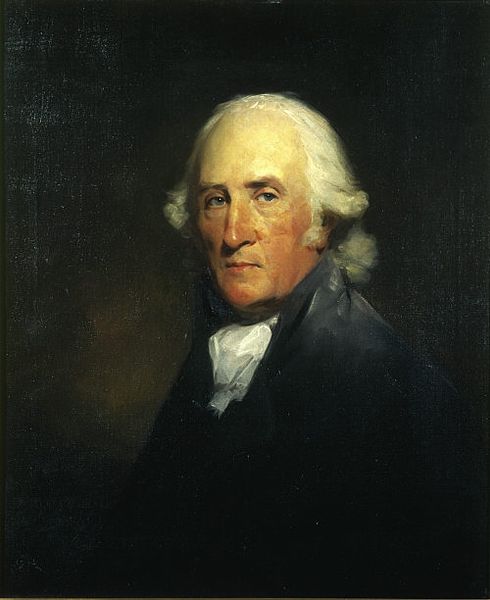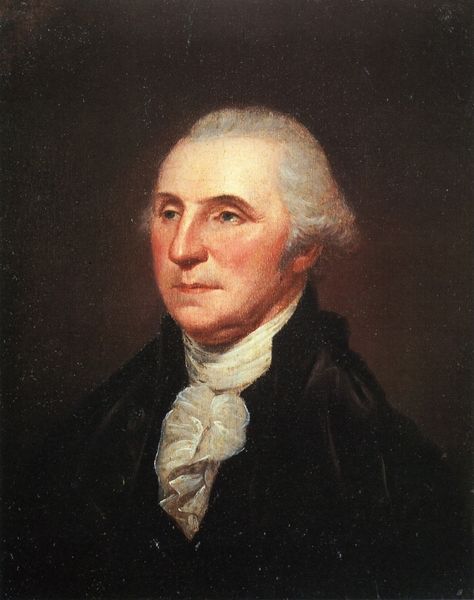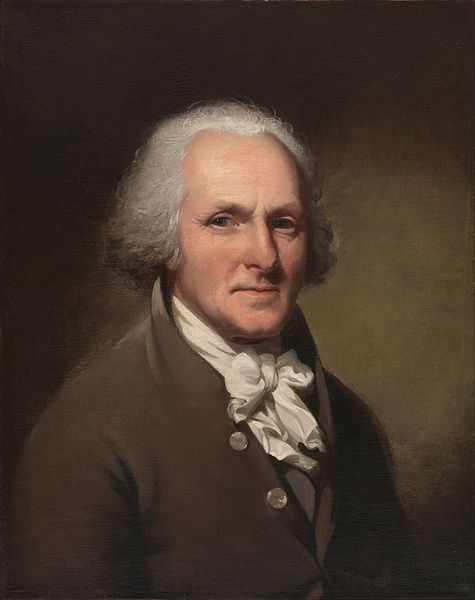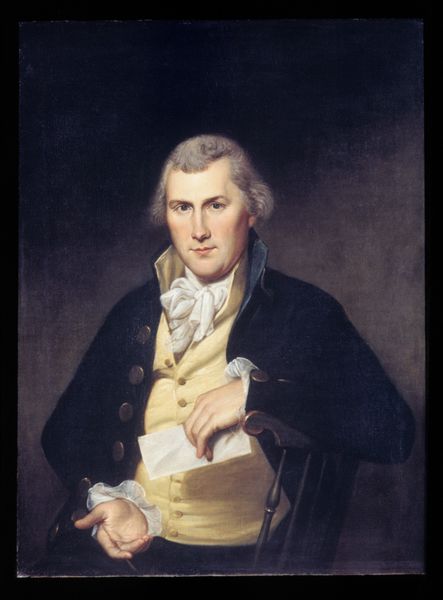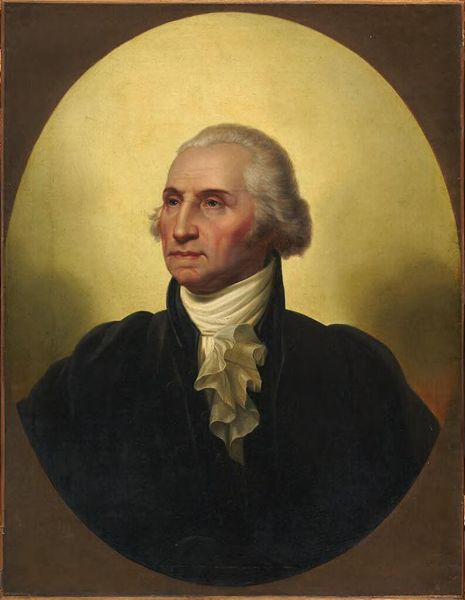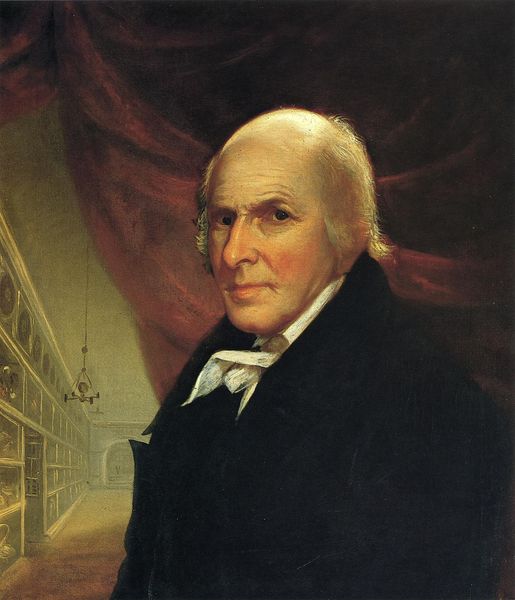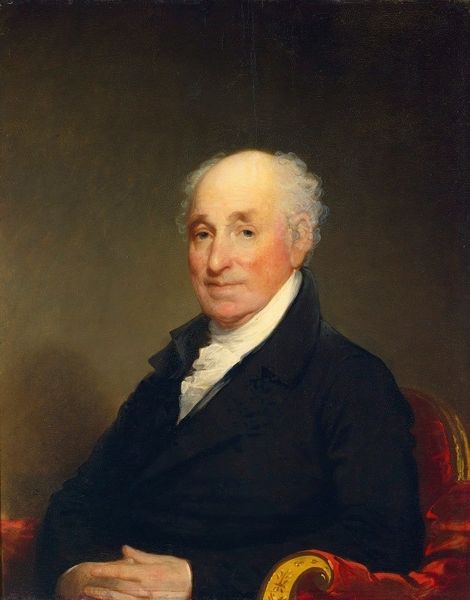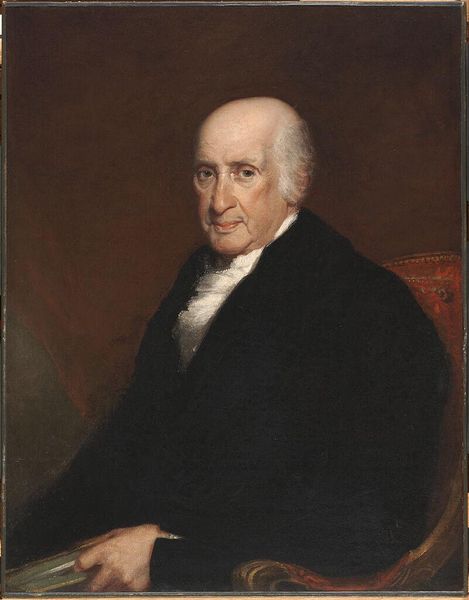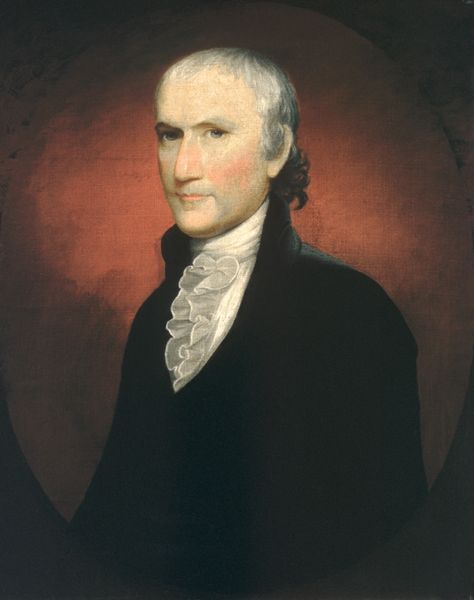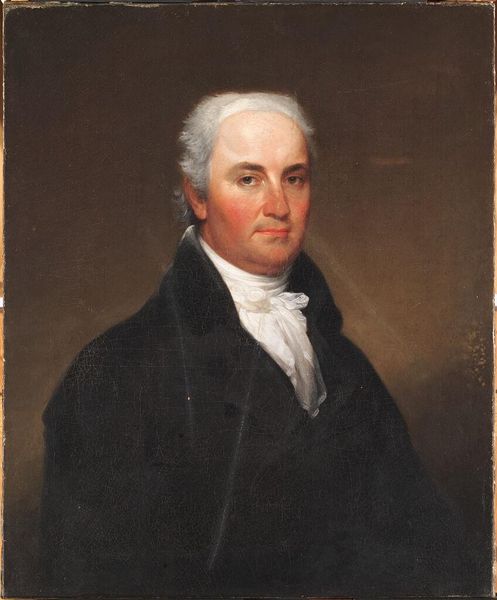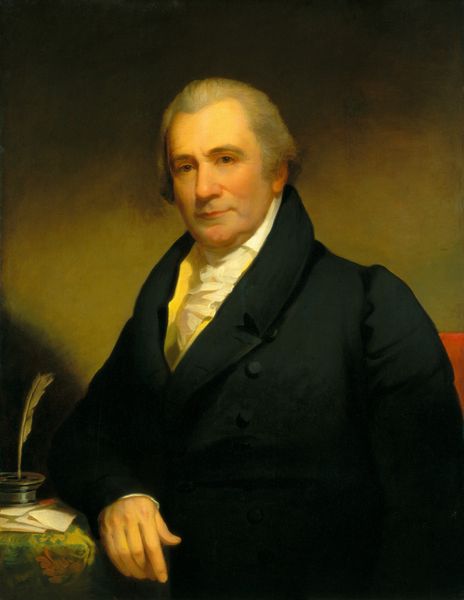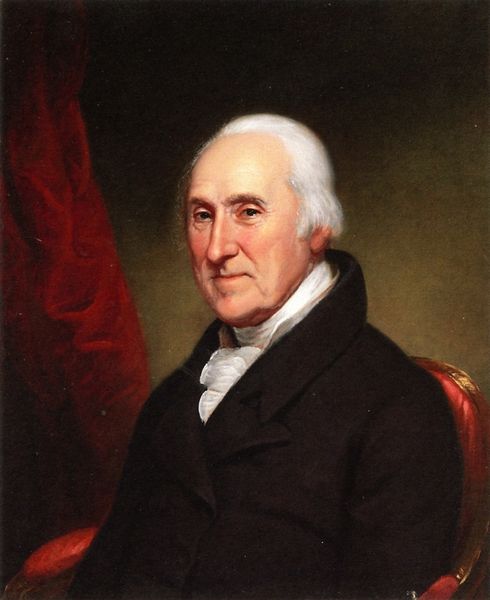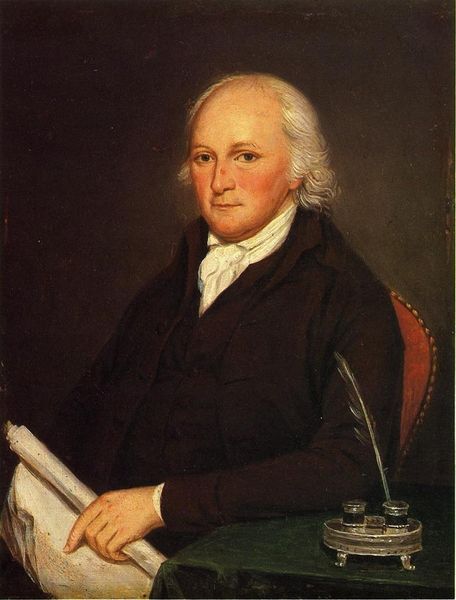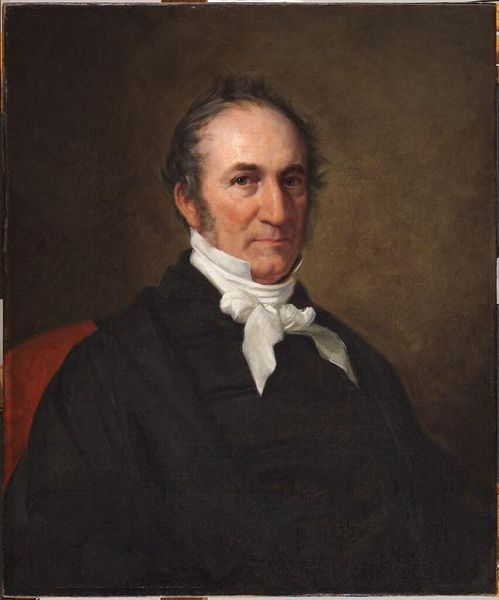
painting, oil-paint
#
portrait
#
neoclacissism
#
self-portrait
#
painting
#
oil-paint
#
academic-art
#
realism
Copyright: Public domain
Editor: Here we have Charles Willson Peale's self-portrait from 1822, created with oil paint. It's… surprisingly direct. There’s an openness to his gaze that really invites you in, almost like he's about to start a conversation. What do you see in this piece? Curator: You know, it’s funny you say "direct," because to me, it’s also a performance. Not in a disingenuous way, but as a conscious construction of the artist's identity. It is so much more than realism! What do you see when you consider that palette he's holding so proudly? It’s a symbol, isn’t it? Of craft, of creativity... of power? I see a man both revealing himself and carefully curating the version he wants posterity to remember. Editor: That makes a lot of sense. I didn’t initially see the "performance" aspect, but considering the era, presenting oneself with such control would've been really important. The palette as a symbol of power... I like that. Curator: And that tie, practically spilling off his neck -- what of that little bit of chaos within order? Also note that he's older here, wiser perhaps. But he wants us to see the tools that make his very livelihood... the same tools that can keep us frozen forever at his chosen age! Editor: It really flips my initial viewing. I was focused on this plainness of it all, but you've helped me realize the layers of intent behind it, the calculated artistry. Thank you! Curator: Exactly! Sometimes the "plainest" things whisper the loudest stories, don't they? We must never believe everything at face value. Keep that third eye open always, dear Editor!
Comments
No comments
Be the first to comment and join the conversation on the ultimate creative platform.
